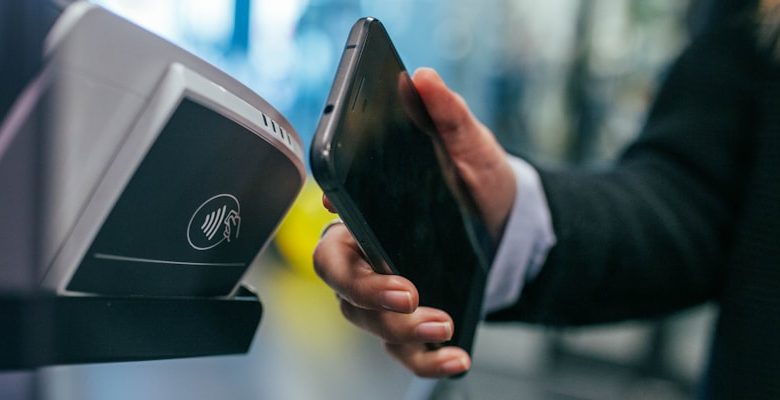Ripple (XRP): The Global Payment Solution

- What is Ripple (XRP) and how does it revolutionize global payments?
- The benefits of using Ripple (XRP) for cross-border transactions
- How Ripple (XRP) is disrupting the traditional banking system
- Exploring the partnerships that make Ripple (XRP) a global payment solution
- The role of XRP in the future of financial transactions
- Regulatory challenges facing Ripple (XRP) and the cryptocurrency industry
What is Ripple (XRP) and how does it revolutionize global payments?
Ripple (XRP) is a digital currency that aims to revolutionize global payments by providing a fast, secure, and cost-effective way to send money across borders. Unlike traditional payment systems that rely on a centralized authority, Ripple uses a decentralized network of validators to confirm transactions, making it more efficient and reliable.
One of the key features of Ripple is its use of a technology called the Ripple Protocol Consensus Algorithm (RPCA), which allows for almost instant transactions with minimal fees. This makes it ideal for businesses and financial institutions that need to make large or frequent international payments.
Furthermore, Ripple’s native currency, XRP, serves as a bridge between different fiat currencies, allowing for seamless exchanges without the need for multiple intermediaries. This not only reduces costs but also eliminates the risk of currency fluctuations during the transfer process.
Overall, Ripple (XRP) is poised to disrupt the traditional banking system by providing a faster, cheaper, and more secure alternative for global payments. Its innovative technology and strategic partnerships with major financial institutions make it a promising solution for the future of cross-border transactions.
The benefits of using Ripple (XRP) for cross-border transactions
Using Ripple (XRP) for cross-border transactions offers a range of benefits that make it a preferred choice for businesses and individuals alike. One of the key advantages of using Ripple for international payments is its speed. Transactions using Ripple’s XRP token can be completed in a matter of seconds, compared to traditional bank transfers which can take days to process.
Another benefit of using Ripple for cross-border transactions is its low cost. Ripple’s technology allows for transactions to be completed with minimal fees, making it a cost-effective solution for businesses looking to save money on international payments. Additionally, Ripple’s decentralized network ensures that transactions are secure and reliable, providing peace of mind to users.
Furthermore, Ripple’s XRP token is highly liquid, meaning that it can be easily converted into any fiat currency, making it a convenient option for businesses operating in multiple countries. This liquidity also helps to minimize the risk of volatility in exchange rates, providing stability for businesses engaging in international trade.
How Ripple (XRP) is disrupting the traditional banking system
Ripple (XRP) is revolutionizing the traditional banking system by offering a global payment solution that is faster, more reliable, and more cost-effective than the current systems in place. This disruption is reshaping the way banks and financial institutions conduct cross-border transactions, making it easier and more efficient for businesses and individuals to send and receive money across borders.
One of the key ways in which Ripple is disrupting the traditional banking system is through its use of blockchain technology. By leveraging blockchain, Ripple is able to facilitate near-instantaneous cross-border payments, cutting down on the time it takes for transactions to be completed. This speed is a significant improvement over the current system, which can take days to process international payments.
Another way in which Ripple is shaking up the banking industry is by offering lower transaction fees compared to traditional banking systems. This cost-effectiveness makes it an attractive option for businesses looking to save money on international payments. Additionally, Ripple’s transparency and security features provide peace of mind for both senders and receivers of funds.
Ripple’s disruptive technology has caught the attention of major financial institutions around the world, with many banks partnering with Ripple to explore how they can incorporate its technology into their own systems. This widespread adoption of Ripple is a testament to the impact it is having on the traditional banking system and its potential to revolutionize the way money is moved across borders.
Exploring the partnerships that make Ripple (XRP) a global payment solution
Ripple (XRP) has established numerous partnerships with financial institutions and payment providers around the world, making it a truly global payment solution. These partnerships have helped Ripple expand its network and increase its presence in the international money transfer market.
One of the key partnerships that Ripple has forged is with SBI Holdings, a leading financial services company in Japan. Through this partnership, Ripple has been able to tap into the Japanese market and provide its innovative payment solutions to a wide range of customers.
Another important partnership for Ripple is with American Express, a major credit card company. By working together, Ripple and American Express have been able to streamline cross-border payments and provide customers with faster and more cost-effective money transfer options.
Ripple has also partnered with Santander, one of the largest banks in Europe. This partnership has allowed Ripple to leverage Santander’s extensive network and reach a larger audience of potential users. By working together, Ripple and Santander are revolutionizing the way money is transferred across borders.
The role of XRP in the future of financial transactions
As we look towards the future of financial transactions, it is clear that XRP, the digital asset native to the Ripple network, will play a significant role. XRP offers fast and low-cost cross-border payments, making it an ideal solution for the increasingly globalized world we live in. With its focus on efficiency and scalability, XRP has the potential to revolutionize the way money moves across borders.
One of the key advantages of XRP is its speed – transactions settle in a matter of seconds, compared to the days it can take with traditional banking systems. This speed is crucial in today’s fast-paced world, where time is of the essence. Additionally, XRP’s low transaction fees make it an attractive option for businesses and individuals looking to save money on cross-border payments.
Furthermore, XRP’s use of blockchain technology ensures that transactions are secure and transparent. This level of security is essential in an era where cyber threats are on the rise. By utilizing XRP for financial transactions, businesses can have peace of mind knowing that their funds are safe and protected.
Overall, XRP’s combination of speed, affordability, and security makes it a promising player in the future of financial transactions. As the world becomes increasingly interconnected, XRP’s ability to facilitate seamless cross-border payments will only become more valuable. With its innovative approach to payments, XRP is well-positioned to shape the future of finance on a global scale.
Regulatory challenges facing Ripple (XRP) and the cryptocurrency industry
One of the primary challenges facing Ripple (XRP) and the wider cryptocurrency industry is navigating the complex regulatory landscape. Governments around the world are still trying to figure out how to regulate cryptocurrencies, leading to uncertainty and potential legal risks for companies like Ripple.
Regulatory bodies are concerned about the potential use of cryptocurrencies for illicit activities such as money laundering and terrorism financing. This has led to increased scrutiny and pressure on companies like Ripple to comply with anti-money laundering (AML) and know your customer (KYC) regulations.
Furthermore, the classification of cryptocurrencies like XRP is still a grey area in many jurisdictions. Some regulators consider them as securities, while others see them as commodities or even currencies. This lack of clarity makes it challenging for companies like Ripple to operate within the bounds of the law.
Another regulatory challenge facing Ripple is the issue of cross-border payments. As a global payment solution, Ripple’s technology allows for fast and low-cost transactions across borders. However, different countries have different regulations regarding cross-border payments, which can create obstacles for Ripple’s expansion into new markets.



